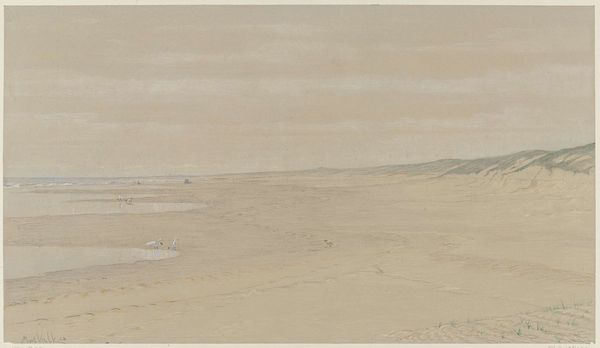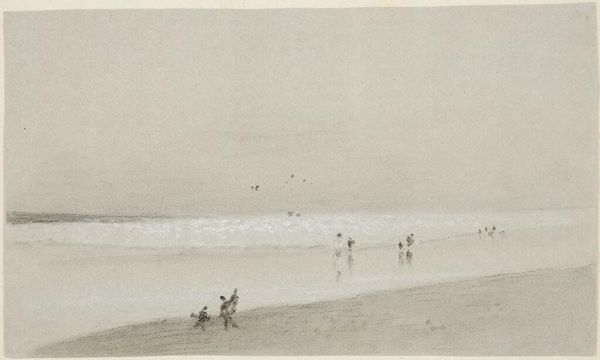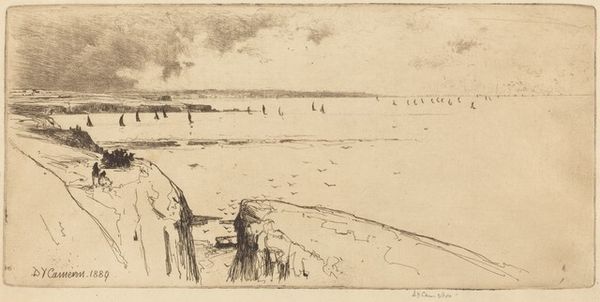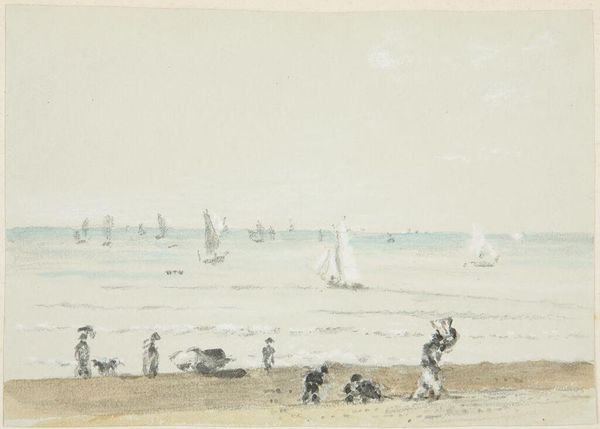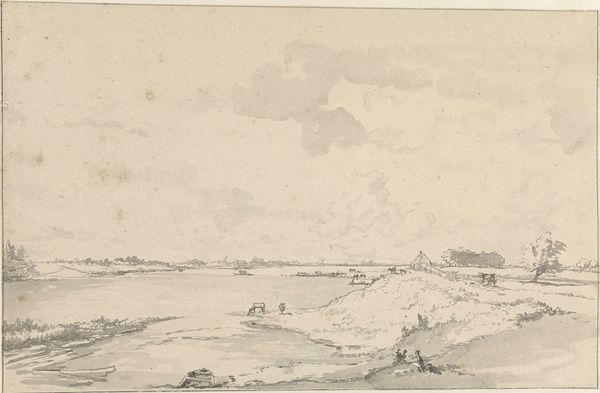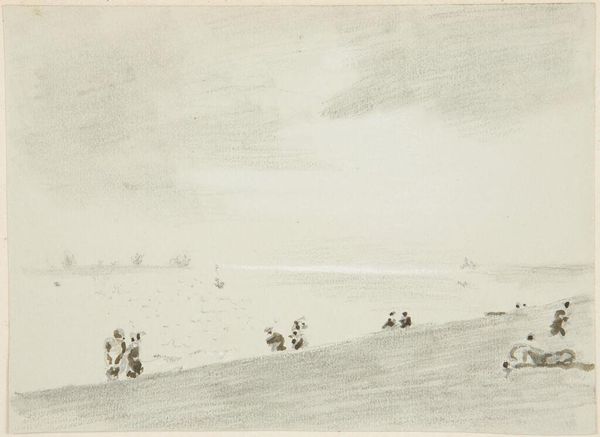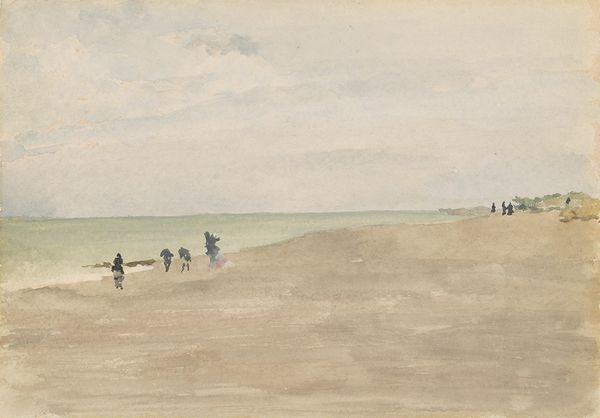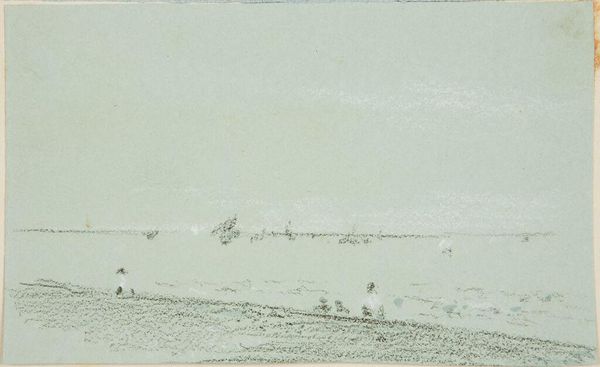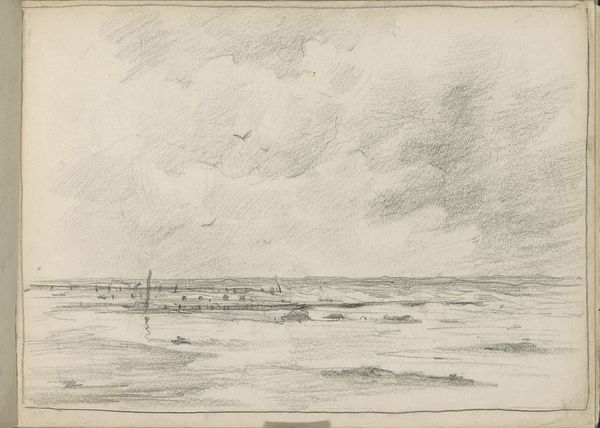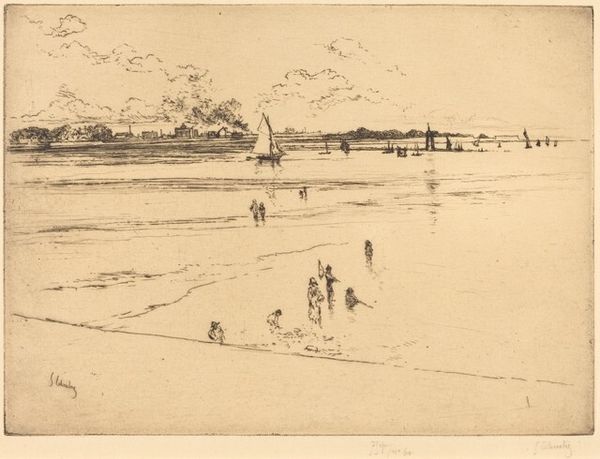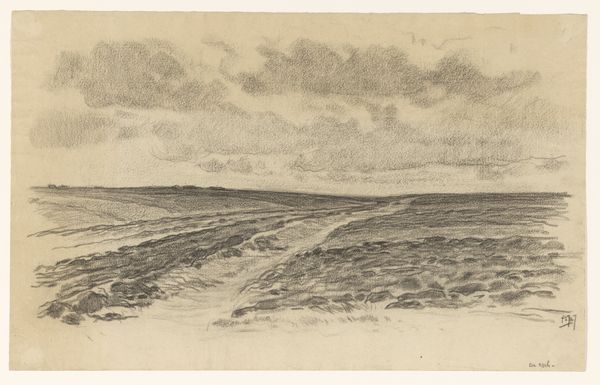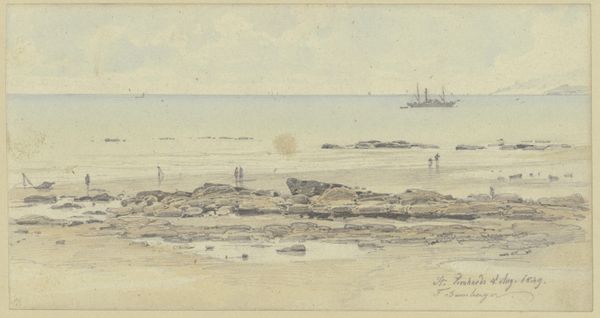
Copyright: CC0 1.0
Curator: Looking at this "Beach Scene," rendered in the style of J.M.W. Turner and held here at the Harvard Art Museums, I'm immediately struck by its muted tones and the overall atmosphere of quiet desolation. Editor: For me, the magic is in the making. See how the artist uses delicate washes and subtle graphite? It's less about a precise depiction, more about evoking the feeling of the beach, and perhaps the solitude of those working there. The materials themselves speak of transience. Curator: That "feeling" is key, especially when considered within the context of 19th-century landscape painting. Turner and his contemporaries grappled with the changing relationship between humanity and nature, reflecting anxieties about industrialization. Beach scenes allowed for meditations on labor. Editor: Exactly. And what kind of labor? Is it fishing, gathering, or perhaps even the leisure of strolling along the shore? The ambiguity is potent. The artist’s choice of modest materials democratizes the subject. It's not a grand statement, but an everyday scene made profound through process. Curator: I appreciate how you ground it in materiality. It's a reminder that art doesn't exist in a vacuum. Its creation is tied to socio-economic conditions, artistic styles, and public expectations. Editor: And maybe, in its quiet way, it challenges those very expectations. Thank you for expanding my understanding of it. Curator: Likewise, considering your focus on the labor of artmaking has shed light on aspects I hadn’t fully appreciated.
Comments
No comments
Be the first to comment and join the conversation on the ultimate creative platform.
